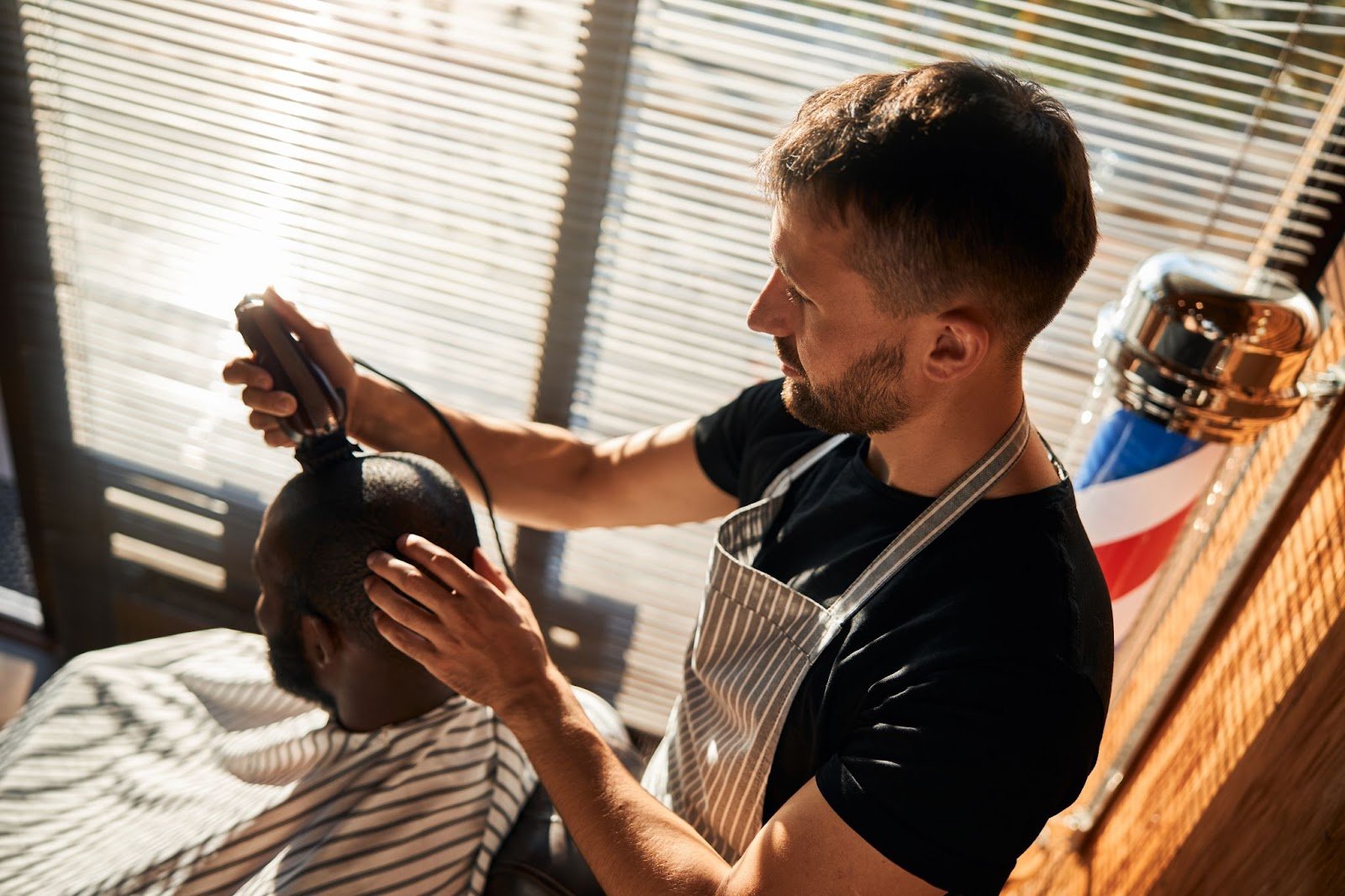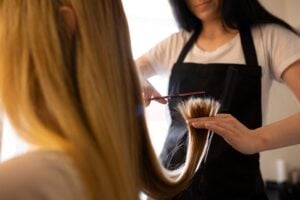Learning how to cut men’s hair is one of the most valuable and practical grooming skills you can develop. But there’s more to it than just trimming the sides or cleaning up the neckline. Great men’s haircuts are about structure, balance and understanding different hair types and head shapes. If you’re considering becoming a professional barber, these tips are your first step toward success.
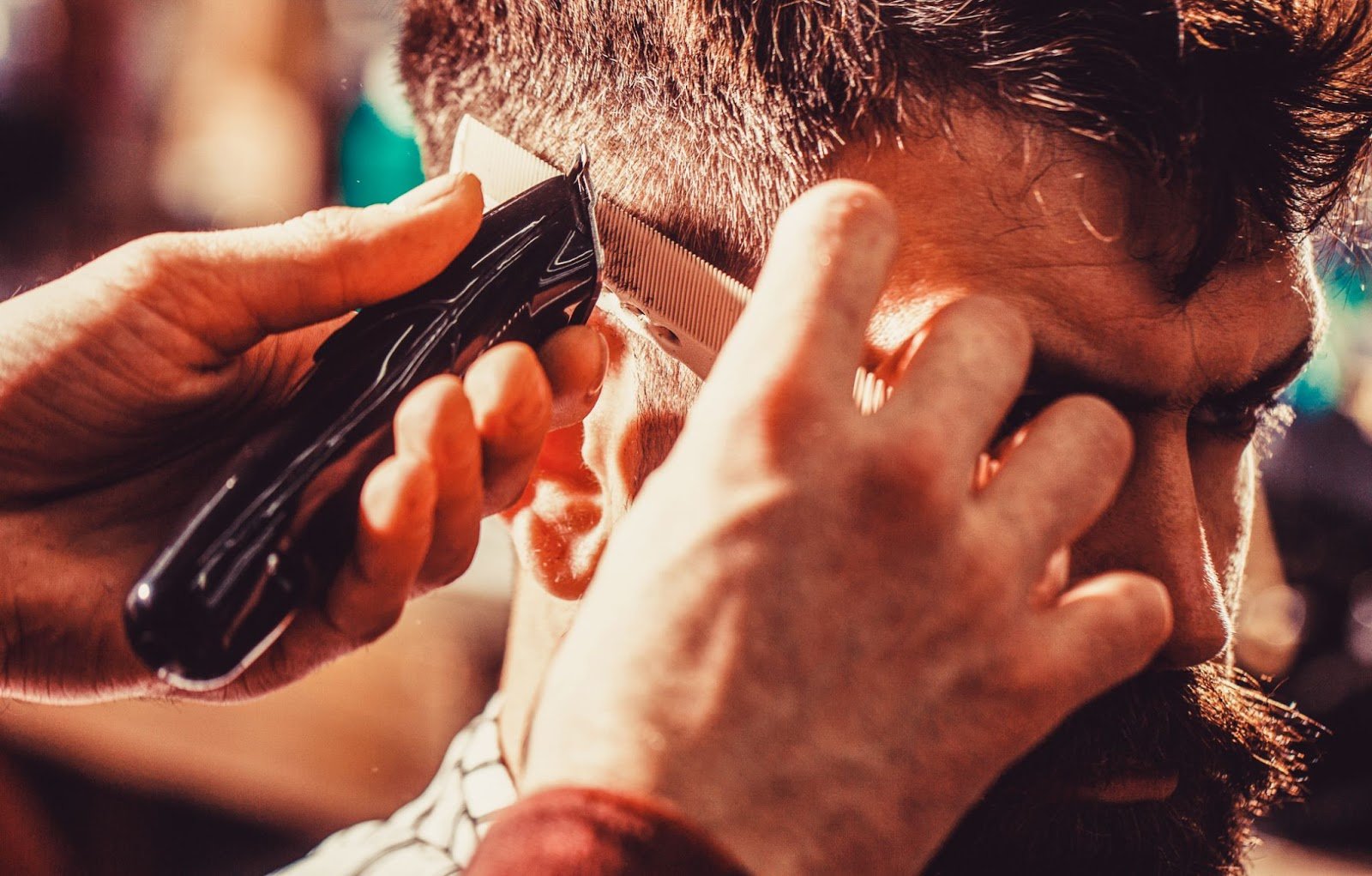
1. Understanding Hair Types
Straight Hair
Straight hair tends to lay flat against the scalp and reveals uneven lines more easily than other textures. So, when creating short thin hair cuts for men with straight hair, precision is key.
Use sectioning and controlled cutting techniques to avoid choppy or uneven results. Texturizing shears may help add volume and movement.
Curly Hair
Curly hair poses other challenges due to its bounce, shrinkage and unpredictability when dry. Therefore, hair cutting for curly hair men requires a curl-by-curl approach. This is often best done when the hair is dry or only slightly damp.
Make sure to avoid cutting too much hair at once and always account for how the curls will retract once they dry. Men’s curly styles benefit from layering with minimal thinning to keep the natural shape intact.
Coily and Textured Hair
Black hair cuts for men typically involve tighter coils, which require different fading, line-up and detailing techniques. So, clipper control is crucial and edge detailing around the hairline and beard is often just as important as the cut itself.
Moisture and proper combing tools are also essential when working with this texture.
2. Understanding Face Shapes
Round Faces
A hair cut for round face men should focus on adding height and avoiding width. So, styles such as high fades with volume on top elongate the face and help create a more balanced look.
It’s generally best to avoid cuts that add bulk to the sides, such as bowl cuts or even-length buzz cuts.
Square Faces
Men with square faces often have strong jawlines and broad foreheads. To soften the angles, go for layered or textured cuts. Side-swept styles and mid fades can create contrast and balance.
Oval Faces
An oval face shape is the most versatile and works well with almost any haircut. From buzz cut hair men styles to long, textured waves, oval-faced clients can wear a wide range of looks.
Heart and Diamond Faces
These face shapes have narrower chins and broader foreheads or cheekbones. Styles that add volume to the lower part of the head, such as longer layers or tapered sides with some fullness at the bottom can provide balance.
3. Get the Right Tools for the Job
Before you begin, you need to find the proper tools. High-quality equipment ensures better results. Let’s be honest, a pair of random scissors you will find laying around your house is not the best option.
Essential tools include:
- Clippers with multiple guard lengths (used for buzz cut hair men, fades and tapering)
- Shears and thinning scissors for shaping longer or thick hair
- A trimmer or outliner for crisp edges and necklines
- Combs, sectioning clips, spray bottles and capes
- A sanitizing solution and cleaning brushes for hygiene
It may seem unimportant at first, but investing in the right tools makes it easier to perform cuts, especially when precision matters the most.
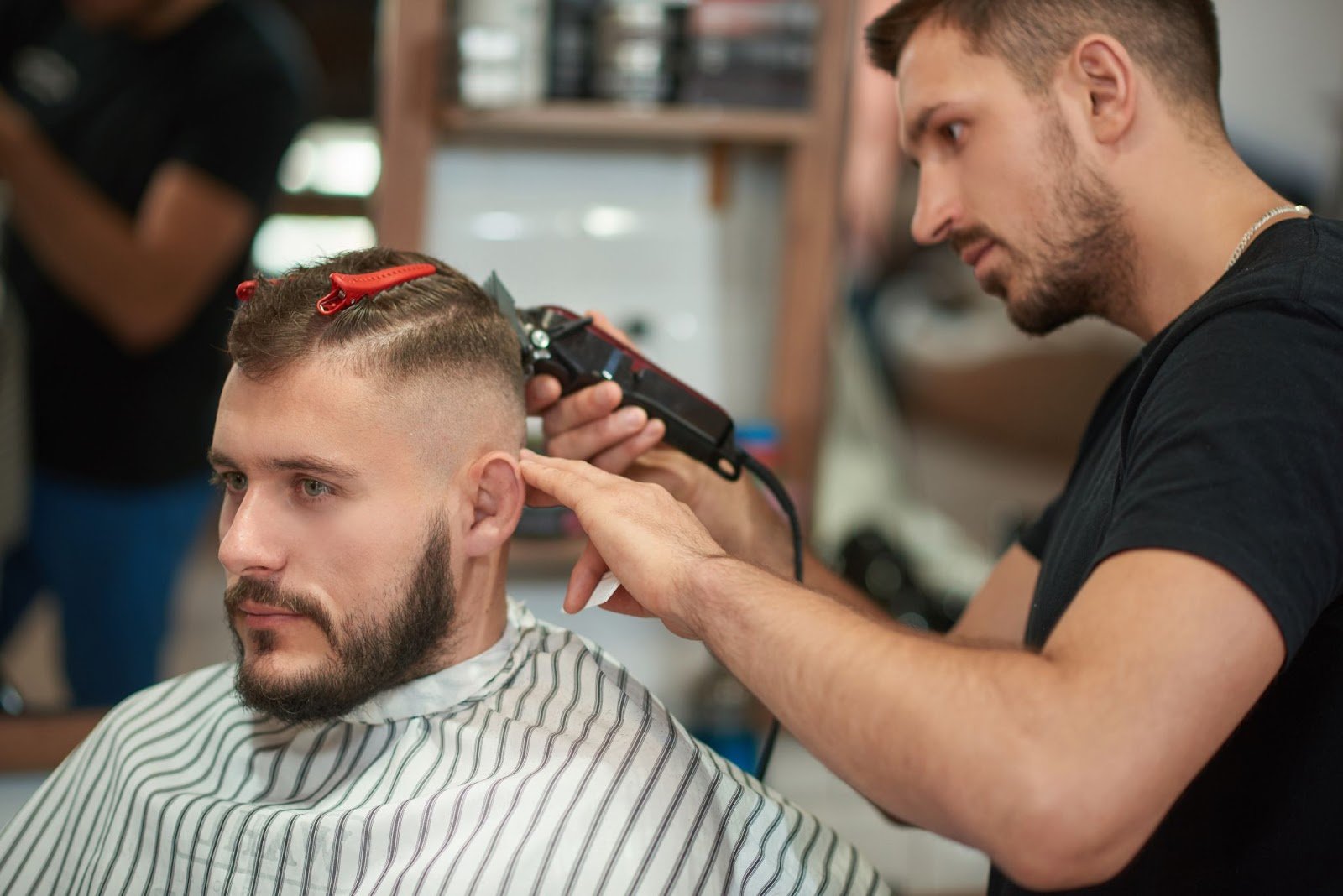
4. Master the Step-by-Step Basics
Now, that being said, let’s walk you through the basic structure of how to cut men’s hair, especially for beginners:
Step 1: Sectioning
First ask your client what style they’re aiming for. Consider their hair type, maintenance level and talk to them about their lifestyle and needs.
Then, start by sectioning the hair using clips or partings to maintain proper control during the cut.
Step 2: Clipper Work on the Sides
In most cases, you will need to realize a fade. Start from the bottom and work upward with your clippers, using different guards to blend seamlessly between sections.
A high fade involves gradually transitioning from very short, or even skin, at the bottom to longer lengths on top. Take your time and go section by section.
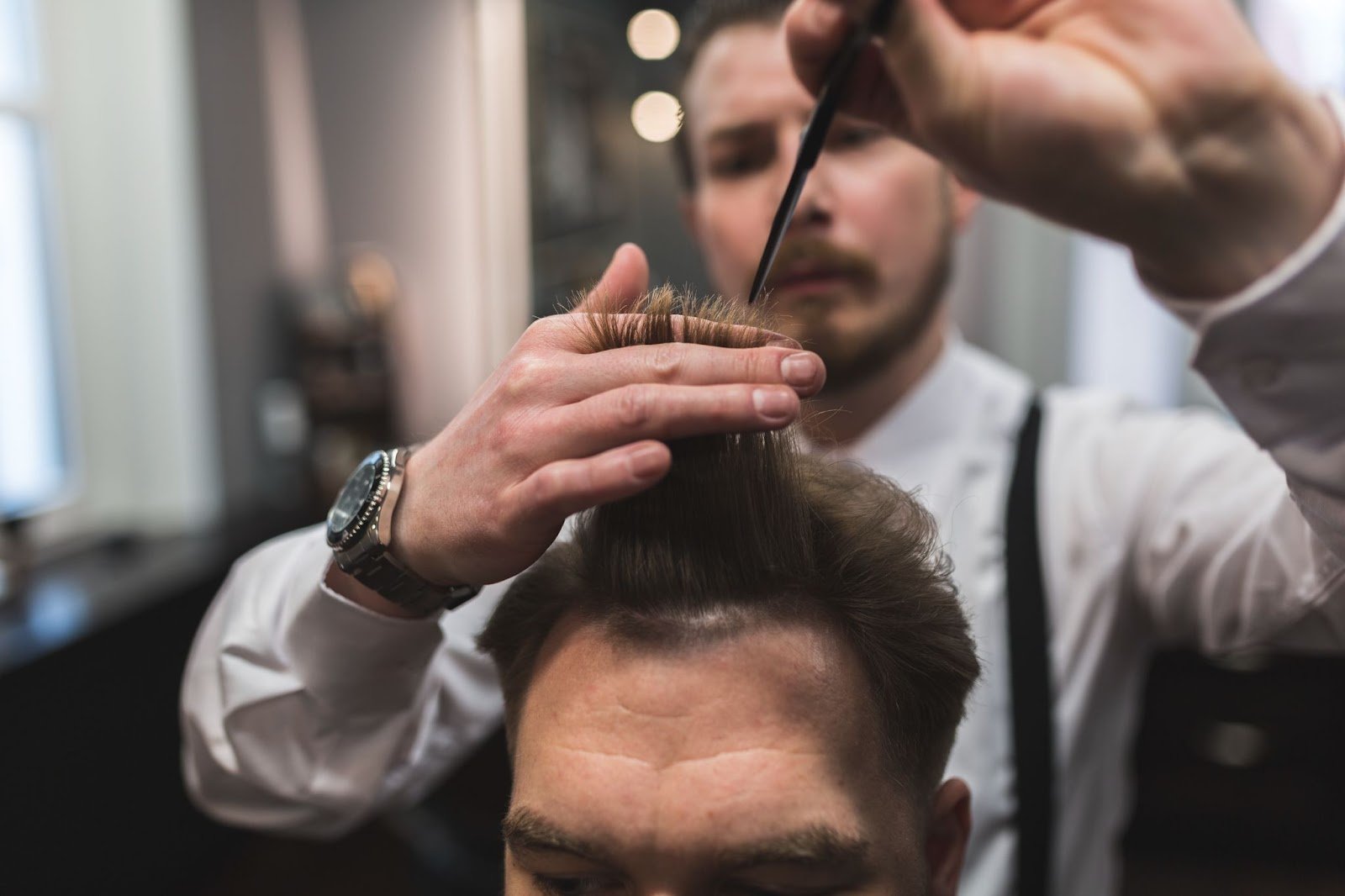
Step 3: Scissor Work on Top
Use scissors to trim the crown, keeping the hair damp for better control. With short hair cuts for men, aim for uniform length and shape.
For longer haircuts, the approach shifts. You’re often working to preserve length while refining the shape. Use point-cutting techniques to remove bulk without compromising flow.
Layering becomes more important here, lift sections vertically and cut at angles to enhance texture and movement. Always check how the hair falls naturally to ensure it doesn’t look too heavy or flat after drying.
Step 4: Edging & Detailing
Outline the ears, neckline and sideburns with trimmers or razors. When doing clean and sharp hair cuts for men, precise detailing is essential to achieve that polished look.
✂️ Want to go beyond the basics? Learn fades, tapers and beard shaping in our Barbering Program, where every student trains under licensed professionals.
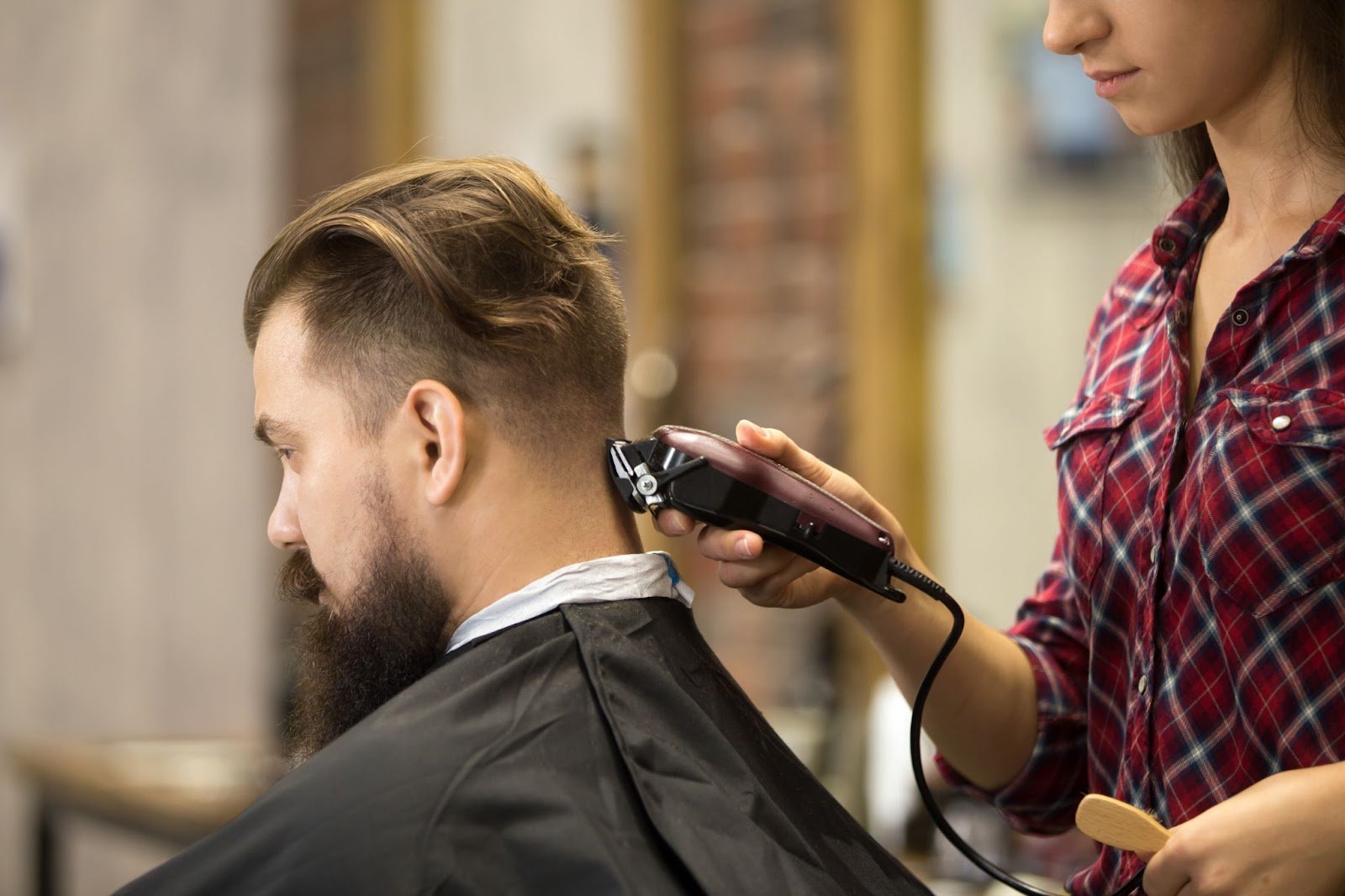
5. Learn the Most Popular Men’s Haircuts
Before diving into advanced styles, make sure you know how to execute these foundational cuts:
- Buzz cut hair men – Uses a single clipper guard for an even finish
- Crew cut – Slightly longer on top with tapered sides
- Hair cut men high fade – Requires clean blending between guard lengths
- Pompadour or quiff – For clients asking how to cut men’s longer hair, these styles involve volume and backcombing
- Hair cut for curly hair men – Requires layering techniques to prevent pyramid shapes and maintain curl pattern
Each style requires a different blend of clipper and scissor work, especially when adapting cuts for different textures and face shapes
📸 Students at Cosmetology & Spa Academy learn to perform and customize these styles based on client features and preferences.
6. Communication and Aftercare Matter
Being a great barber or stylist isn’t just about technique—it’s also about building relationships and guiding clients on how to maintain their new look.
Being a great barber or hair stylist doesn’t revolve only around your technique. It’s also important that you learn how to build positive relationships with your clients and guide them on how to maintain their new look.
Make sure to ask about:
- Their styling routines and the tools they already use
- Preferred products (pomades, matte pastes and more)
- How often they’re willing to return to the barbershop for trims
Every hairstyle requires maintenance, although some more than others. Make sure to discuss your client’s willingness to keep up with their chosen style before proceeding with the hair cut. Recommend the right products and give them tips and tricks on how to style their hair at home.

7. Common Mistakes to Avoid
Here are some common errors that can make or break a men’s haircut:
- Uneven blending in fades or tapers
- Cutting curly or textured hair too short or while overly wet
- Failing to adapt the cut to face shape (e.g., using wide styles on a round face)
- Ignoring the crown’s growth direction, which will lead to awkward cowlicks
- Not sanitizing tools properly between uses
Mistakes like these are common without professional training. However, with the right guidance, it’ll be easy for you to avoid them. And remember, practice makes perfect!
Why Professional Barbering Education Makes a Difference
You can always watch tutorials online, follow our guidelines to the dot or practice on a friend, however, we believe there’s no optimal substitute for real instruction. If you’ve always been curious about how do you cut men’s hair, learning in a structured environment provides you with:
- Consistent feedback from licensed instructors
- Exposure to a variety of hair types and styles
- A safe space to practice different techniques under expert supervision
Graduates of our programs go on to become barbershop owners, freelance groomers, platform artists, and even educators. So, if you’re passionate about hair, we strongly recommend you consider joining our program as the fundamental step towards building a new, rewarding career.
❓ Unsure what’s the next step you should take? Contact us and our admissions team will be more than happy to answer all your questions!
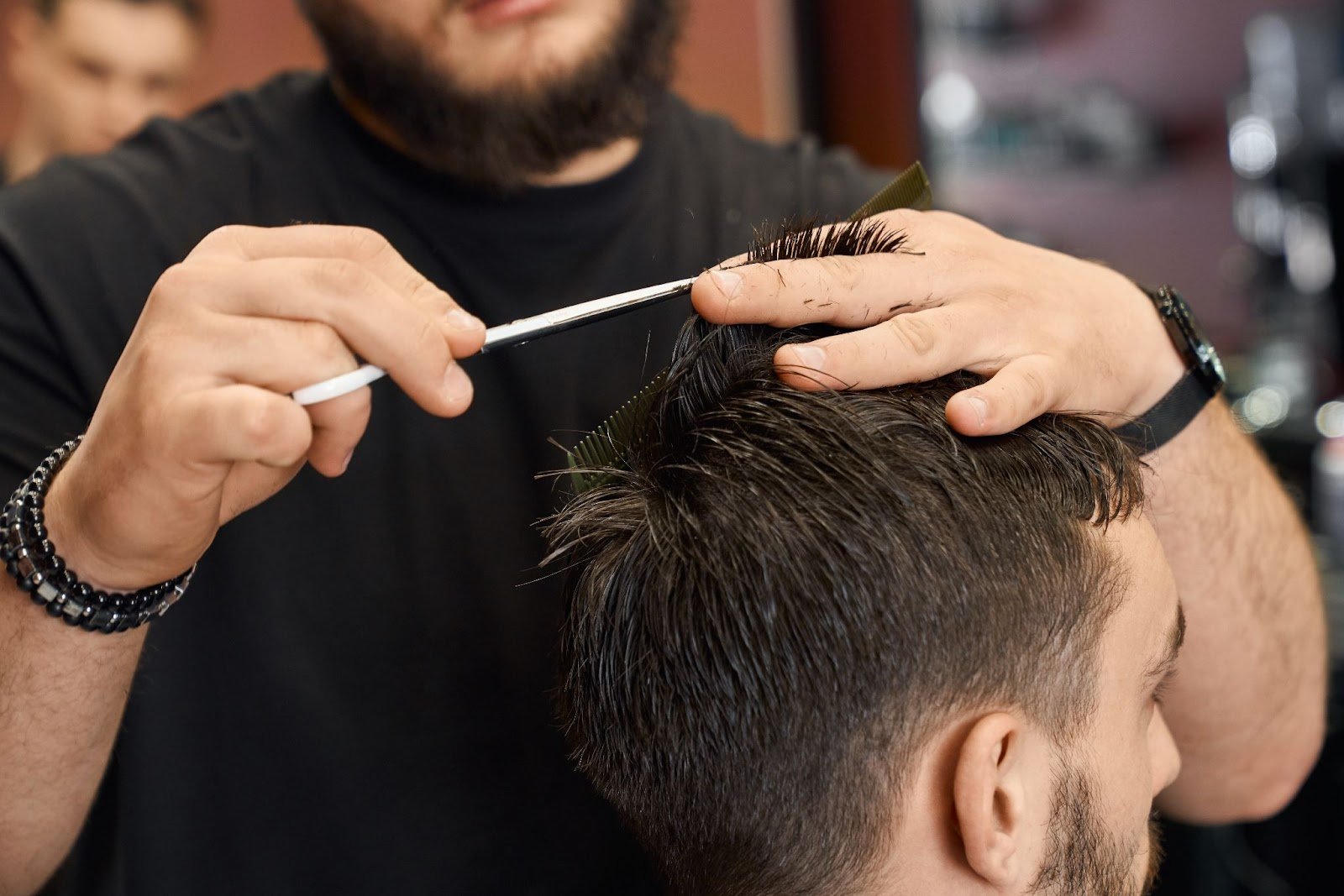
FAQs about Cutting Men’s Hair
How long does it take to learn to cut men’s hair?
Our 1500-hour barbering program can be completed in just under a year. It includes both classroom instruction and supervised practice. Contact us if you want to explore your schedule options.
Can I learn to cut hair at home?
You can practice the basics, however, keep in mind that licensed professionals receive comprehensive training in advanced techniques, anatomy and product knowledge that can’t be learned solely online.
What are some easy men’s hair styles to start with?
Buzz cuts, crew cuts and basic fades are great entry-level cuts for beginners and they look great on most people!
What haircut suits thin or fine hair?
When cutting thin or fine hair, you should try to avoid over-layering. Men with such hair textures benefit from textured, tighter cuts that create more volume.
What haircut is best for curly hair?
Men with curly hair should try to maintain shape and length to avoid shrinkage and frizz. Therefore, layering and curl-specific techniques are essential in creating a balanced look.

